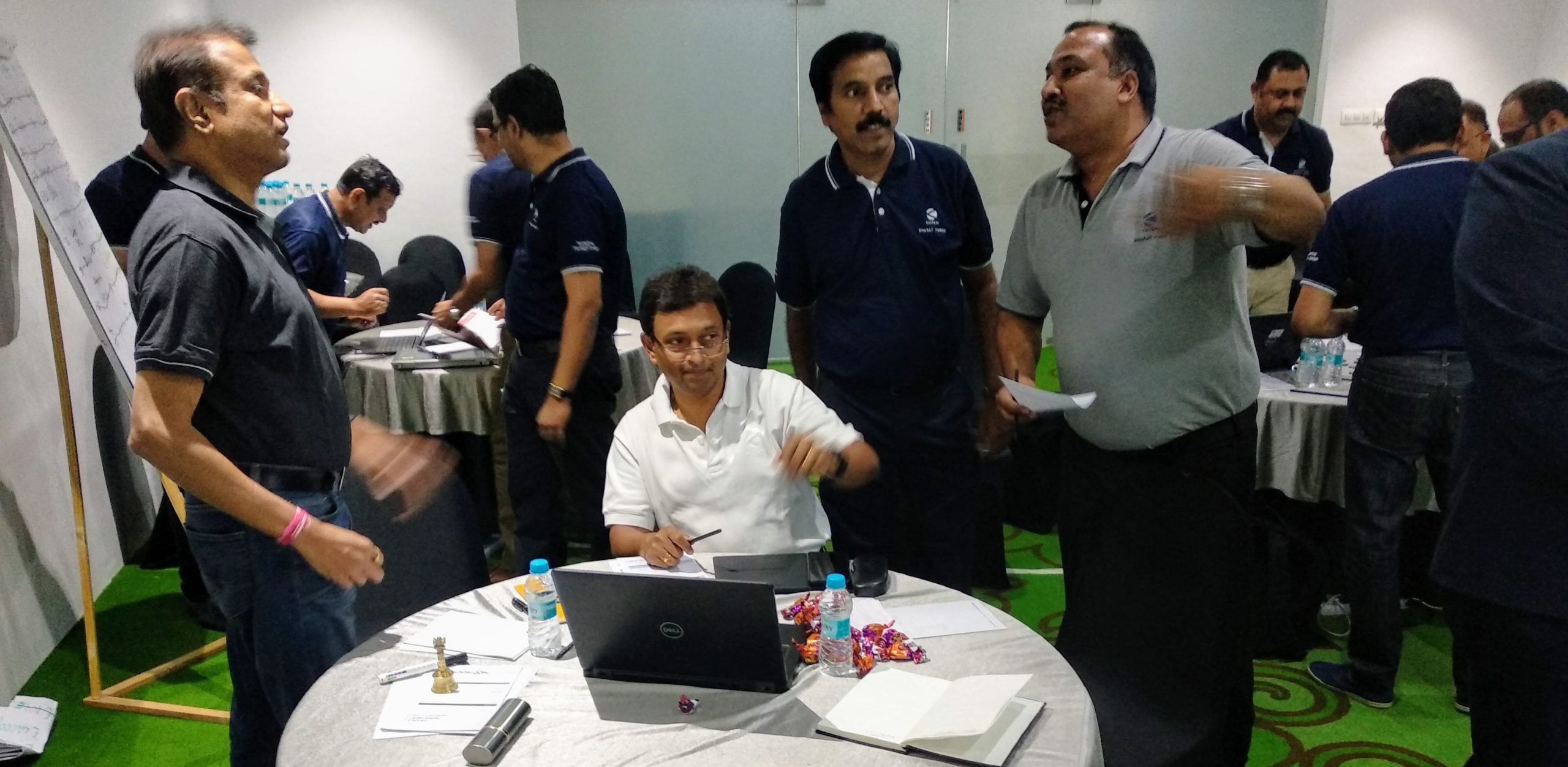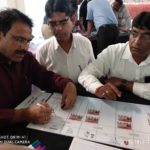We at NuTurns, one of India’s leadership and business simulation company attempted this herculean task with the sales and production heads, who were also the executive directors of a billion dollar company. They steered the world’s largest company in their industry.
To resolve this tussle NuTurns organized Rocket – a one day business simulation in one of Asia’s top three golf resorts located in Pune. Rocket proved to be one of the lethal weapons to bring peace between both the powerful business leaders.
Rocket is like a Swiss knife. It has many applications. In this case we used this simulation to help the conflicting teams to come to peace by sophisticating their ‘Gate of Acceptance.’ It is the criteria the business or functions define among themselves to decide what is acceptable in terms of quality, delivery, order size, efficiency, profitability of products etc.
To play Rocket top 16 people, including the executive directors from sales and production were invited. They were divided into 5 functions – sales, production, finance, marketing and management (MD). Together they were challenged to scale up an already running business to the next level.
Every function was allotted its function-specific digital dashboard. The marketing guys could see a lead coming in every minute. Their job was to qualify the leads and transfer it on the internal tracking system (CRM board), choose and run the marketing campaigns for the right audience. And most importantly measure the ROI of their campaigns.
 The sales team had to close high value leads to bring in more revenue and on-the-spot commissions. They also had to hand over the authorized ‘request for production’ document to the production team.
The sales team had to close high value leads to bring in more revenue and on-the-spot commissions. They also had to hand over the authorized ‘request for production’ document to the production team.
Before starting the production the production team had to design the product, get it approved from the nasty quality head and setup the machinery to produce the goods.
Once the goods were produced the production team had to handover the ‘request for production’ sheet to the finance team to raise an invoice. The finance had to get the PO from the sales team, get it authorized from the MD and sent it to over to the customer for payment.
Every function was busy working as like a horse with blinders, which prevented them from seeing behind and beside. They were all working in silos without looking at the bigger picture. The MD was busy in authorizing orders and invoices. He too was lost in operations. The result – after 26 weeks of play (each week represented 1 minute) they ran out of cash and became insolvent.
Rocket - Round 1
No one was paying attention to cash flows. No one able to see the impact of their decisions. The level 1 of Rocket ended with negative cash flows – down by $2,25,000. The MD had taken $60,000 loan against his house. He lost his house. He was on the roads. But the sales team was Hawaii. They had earned some handsome commissions and that too at time of sales and before receiving payment from the clients! WOW I would like to work for such a company!
In the debrief session people realized their mistakes. They experientially learnt what they had never learnt in their 20 plus years of experience and academics. The teams was challenged to prove what they learnt in the 1st round by playing the 2nd round. They had to prove by achieving positive cash flows because Cash is REALITY. Cash is KING.
In a 30 minute discussion period all the functions started to collaborate. There was an instant surge of energy in the room. They realized that every function had some important information. Unless that information wasn’t shared with others they couldn’t take out their company from doldrums.
 Marketing started to work closely with production. They decided not to run campaigns for any of the products but for the products which they could produce. After some number crunching exercise the finance team filtered out unprofitable products and clients who had bad credit score. The MD took oath to approve orders (for production) only after considering the cash flows and consulting the finance team. The sales was asked not to close orders which made company rich and not them.
Marketing started to work closely with production. They decided not to run campaigns for any of the products but for the products which they could produce. After some number crunching exercise the finance team filtered out unprofitable products and clients who had bad credit score. The MD took oath to approve orders (for production) only after considering the cash flows and consulting the finance team. The sales was asked not to close orders which made company rich and not them.
After deep collaboration and exchange of vital information among functions the team together decided their gate of acceptance. The team decided what to accept and when to say ‘yes’. The team decided not to say ‘yes’ to all orders. Sometimes it’s good for the business to do nothing. The organizational intelligence decided not to take orders which were more than $1,00,000 as they weren’t ready for it. Bigger orders are not always successful and easy to execute.
Rocket - Round 2
In the 2nd round the team was successful. They achieved positive cash flows. The profits had gone through the roof.
In this simulation when people sat and spoke out their concerns and ideas a in the discussion break a good sophisticated gate of acceptance was made and then executed.
After the simulation the sales and production team sat together to make their poor gate of acceptance more richer, tangible and sophisticated. This is how they did it.
- There was an acknowledgement between both the teams that there were no issues in terms of routine business. The challenges cropped up in orders relating to new product development, where both the teams didn’t have enough information. So more of client meetings, team discussions, collaboration and exchange of information was required between both the teams. It was decided to meet frequently to reduce chaos and indecision, which could help in serving the customers professionally and more importantly responding them before they (customers) followed them up.
- For any new product development business belonging to ‘Y’ category (business which is as good as confirmed) the key account manager would proactively meet the head of new product development and respective production people so that he could set proper delivery lines in the final negotiation stage with the client.
- The RFQs sent by the sales team were not reviewed. Going forward the RFOs of above $1,00,000 million would be reviewed jointly with the new product development team and the key account manager.
- Both the teams realized that they have become big in size but remained small in processes. Henceforth, the production team would support the sales team by appointing their people ‘product wise’. Now the sales rep could reach out to right people quickly and easily for technical details, which would result in quick response to customers.
- Earlier the sales and production teams used to meet only in emergency and firefighting situations, but from now on the meetings would also happen on ‘Z’ category (possibility of new business in the future) business so that RFQs can be put in place. So instead of reacting they would be responding.
- For getting help in drafting RFQs the sales team emails a detailed template to be filled in by the production team. The production felt many of the details asked in it were not required and in some cases there was duplication of data. Through this feedback the sales team took an action to streamline the template. This would help the production team to respond quickly.
- The production confessed that technical information needed for new product development was delegated to the last man in the line, who was often inexperienced. Henceforth, it was decided queries relating to NPD would be handled by the senior most person in NPD team. This made sense as NPDs are more complex and take time to work out the details, but are most profitable and the future business drivers.


